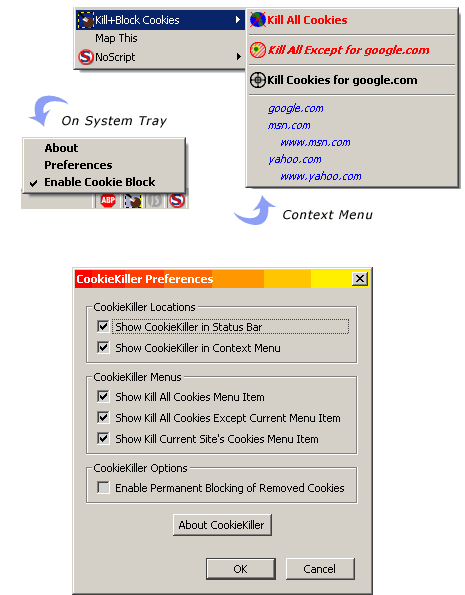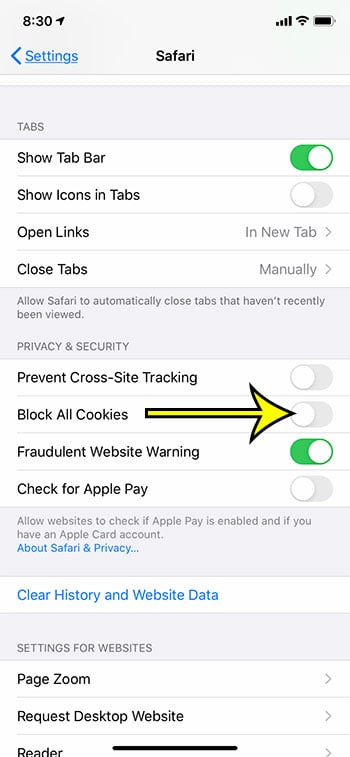

Each ‘_ga’ cookie is unique to the specific property, so it cannot be used to track a given user or browser across unrelated websites. Any site that implements Google Analytics, including Google services, uses the ‘_ga’ cookie. ‘_ga’, the main cookie used by Google Analytics, enables a service to distinguish one visitor from another and lasts for 2 years. For example, Google Analytics uses a set of cookies to collect information and report site usage statistics without personally identifying individual visitors to Google. Some cookies and other technologies help sites and apps understand how their visitors engage with their services. These insights allow services to both improve content and build better features that enhance your experience. AnalyticsĬookies and other technologies used for analytics help collect data that allows services to understand how you interact with a particular service. The ‘YSC’ cookie lasts for the duration of a user’s browsing session. The ‘pm_sess’ cookie lasts for 30 minutes, while the ‘AEC’ cookie lasts for 6 months. These cookies prevent malicious sites from acting on behalf of a user without that user’s knowledge. For example, the ‘pm_sess’, ‘YSC’, and ‘AEC’ cookies ensure that requests within a browsing session are made by the user, and not by other sites. Some cookies and other technologies are used to prevent spam, fraud, and abuse. The combination of these cookies allows Google to block many types of attack, such as attempts to steal the content of forms submitted in Google services. For example, cookies called ‘SID’ and ‘HSID’ contain digitally signed and encrypted records of a user’s Google Account ID and most recent sign-in time. The cookies and other technologies used to authenticate users help ensure that only the actual owner of an account can access that account. SecurityĬookies and other technologies used for security help to authenticate users, prevent fraud, and protect you as you interact with a service. Another cookie, ‘SOCS’, lasts for 13 months and is also used to store a user’s state regarding their cookies choices. Google uses the ‘CONSENT’ cookie, which lasts for 2 years, to store a user’s state regarding their cookies choices. For example, the ‘CGIC’ cookie improves the delivery of search results by autocompleting search queries based on a user’s initial input. The cookie ‘pm_sess’ also helps maintain your browser session and lasts for 30 minutes.Ĭookies and other technologies may also be used to improve the performance of Google services. This cookie expires 8 months from a user’s last use. For YouTube Music, these preferences include volume, repeat mode, and autoplay.

For example, YouTube uses the ‘PREF’ cookie to store information such as your preferred page configuration and playback preferences like explicit autoplay choices, shuffle content, and player size. Other cookies and technologies are used to maintain and enhance your experience during a specific session. These cookies last for 6 months and for 13 months, respectively. Cookies called ‘VISITOR_INFO1_LIVE’ and ‘YEC’ serve a similar purpose for YouTube and are also used to detect and resolve problems with the service. Each ‘NID’ cookie expires 6 months from a user’s last use, while the ‘ENID’ cookie lasts for 13 months. These cookies are used to remember your preferences and other information, such as your preferred language, how many results you prefer to have shown on a search results page (for example, 10 or 20), and whether you want to have Google’s SafeSearch filter turned on. For example, most people who use Google services have a cookie called ‘NID’ or ‘ENID’ in their browsers, depending on their cookies choices. Some cookies and other technologies are used to maintain your preferences. Things considered fundamental to a service include preferences, like your choice of language, information relating to your session, such as the content of a shopping cart, and product optimizations that help maintain and improve that service. FunctionalityĬookies and other technologies used for functionality allow you to access features that are fundamental to a service. Other technologies used to identify apps and devices may be managed in your device settings or in an app’s settings. You can also manage cookies in your browser (though browsers for mobile devices may not offer this visibility). To manage how cookies are used, including rejecting the use of certain cookies, you can visit g.co/privacytools.

Some or all of the cookies or other technologies described below may be stored in your browser, app, or device. Types of cookies and other technologies used by Google


 0 kommentar(er)
0 kommentar(er)
